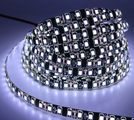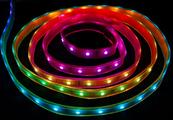What is luminous flux? The higher the wattage, the brighter the lamp.
Some people say that the higher the wattage, the brighter the light fixture!
At first glance, there seems to be nothing wrong with this sentence. Indeed, wattage is one of the most important factors affecting the brightness of a lamp. But the premise is that, "all else being equal", the higher the wattage, the brighter the fixture.
Next, let’s talk about the “other conditions” here.

When it comes to brightness, we have to mention illuminance, and the two are a pair of concepts that are easily confused. Brightness is more biased towards the human eye’s perception of light, while illuminance is the amount of light actually emitted by the lamp.
Illumination is expressed in luminous flux (lux LX), and the unit is LM/㎡, that is, lumens/square meter. The formula is: 1Lx=1 Lm/㎡. In layman's terms, it is the amount of light per unit area that the human eye can see. Assuming that the object is uniformly illuminated by light, then when the luminous flux obtained on 1㎡ is 1 lumen, its illumination is 1 lux.
For example, we recommend that the illumination required for general activity lighting at home is 100LX, which is 100LM/㎡. The lighting requirements for writing, reading and other tasks are relatively high, requiring 300LX, which is 300LM/㎡.

Okay, after briefly understanding the optical terms of illumination, luminous flux, and lumens, let's talk about light efficiency, which is also an important factor affecting the brightness of lamps.
The luminous efficiency value reflects the relationship between wattage and luminous flux (LX), that is, how many lumens (lm) of light each watt of lamps can bring, that is, Lm/W. The calculation formula is: luminous flux = wattage * light efficiency.
Let's take a 20W light bulb as an example. The light efficiency is 100lm/W. At this time, we say that the luminous flux this light bulb can produce after being connected to a suitable power supply is: 20W*100lm/W=2000lm.
So, what are the factors that affect the light efficiency of lamps?
In fact, there are many influencing factors, such as brand, technology, production process, packaging level, material, etc. For example, a 7W LED bulb from brand A has a luminous efficiency of 80lm/W, while a 1W LED bulb from brand B has a luminous efficiency of lm/W. At this time, we will find that although both can emit light of the same brightness, B Branded LED bulbs are more energy-efficient because of their high light efficiency.

Furthermore, different types of light sources are not comparable. For example, the luminous efficiency range of LED lights is usually between 90-160lm/W (some people say there is a higher one, we are just for distance and will not verify it), while the luminous efficiency range of energy-saving lamps is usually between Between 40-90lm/w. At this time, it is unreasonable for you to use LED lights and energy-saving lamps with the same wattage to be brighter than water.
To sum up, there are actually many factors that affect the brightness of lamps, including the material of the lampshade, the length of use, the color of the home environment itself, etc. Therefore, we cannot generally say that the higher the wattage, the brighter the lamp. When we choose lamps, we should pay more attention to more parameters.
Postscript: Lighting design is not just about selecting lights, it is a job that is both technical and artistic. If you really don’t have the time and professionalism to DIY lighting design, you might as well find a lighting designer!





